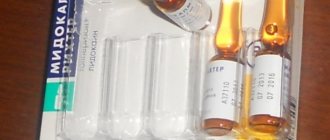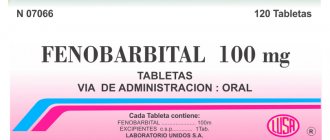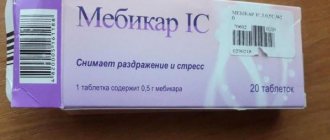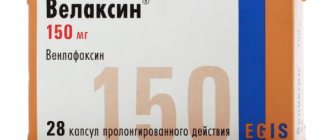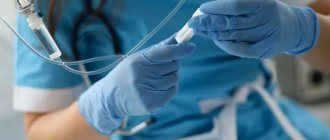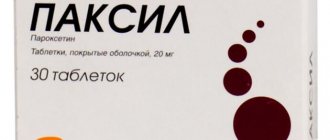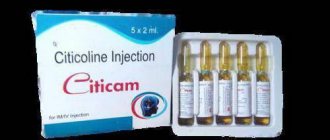pharmachologic effect
The main active component of Adepress promotes the formation of a mechanism for the specific capture of serotonin by neurons in the brain, which reduces anxiety, depressed states, eliminates a pronounced feeling of fear, etc.
The drug does not affect the psychomotor processes of the body, including the functions of the cardiovascular system.
Dissolution of the drug occurs in the gastrointestinal tract, the drug is excreted through the bile ducts, with urine and feces.
"Cipralex"
The drug belongs to the therapeutic group of serotonin reuptake antidepressants. "Cipralex" is used to treat prolonged deterioration of mood of various etiologies. The drug is produced in the form of tablets for oral administration. The capsules are coated with an enteric film coating.
After taking the drug orally, the active microelement is absolutely completely absorbed into the blood from the intestines. Escitalopramoxalate crosses the physiological barrier between the circulatory system and the central nervous system. The cost of the antidepressant Cipralex varies from 1,000 to 4,500 rubles.
Indications for use
Adepress is prescribed to patients suffering from:
- depression;
- obsessive-compulsive behavior disorders;
- panic attacks;
- fear of open spaces;
- persistent anxiety disorders;
- fear of society, manifested in the patient’s feeling of inferiority and closedness from contacts with people around him.
The drug is also prescribed to persons diagnosed with post-traumatic disorder.
Pharmacokinetics
https://www.youtube.com/watch?v=ytcopyrightru
When administered orally at a dose of 30 mg/day, the time to reach equilibrium plasma concentration (Css) is 7–14 days. Cmax in blood plasma is 61.7 ng/ml, the time to reach it is 5.2 hours. Absorption is high. Protein binding - 95%. Metabolized in the liver to form inactive metabolites (it is an inhibitor of the CYP2D6 enzyme system). Excreted by the kidneys - 64% (unchanged - 2%) and through the gastrointestinal tract - 36% (unchanged - 1%). T1/2 - 21 hours.
With increasing dose and/or duration of treatment, there is a nonlinear dependence of pharmacokinetic parameters on dose.
Mode of application
Depending on the picture of the disorder and the age of the patient, the drug begins with a single dose of 10–20 mg. The concentration is increased weekly by 10 mg until the desired therapeutic dose is achieved.
The recommended daily dose of the drug is 40 mg; at the discretion of the specialist, it can be increased to 60 mg.
Adepress is taken in the morning after breakfast. The tablet is washed down with water without chewing. The full course of treatment lasts 4 – 6 months.
Storage conditions and periods
Adepress should be stored out of the reach of children, protected from moisture and light, at a temperature not exceeding 25 °C.
Shelf life – 2 years.
It is recommended to store Adepress out of the reach of children at low humidity and temperatures below 25 degrees. Shelf life is 2 years.
It is recommended to store Adepress out of the reach of children at low humidity and temperatures below 25 degrees.
Shelf life is 2 years.
The drug is available with a prescription.
A drug
should be stored in a dry place at a temperature not exceeding 25° C. Keep out of the reach of children.
The tablets are a prescription drug.
Adepress belongs to list B drugs. It is stored in a place protected from children. Storage temperature is no higher than twenty-five degrees.
Side effects
The list of side effects may include:
- drowsiness and apathy;
- dizziness;
- state of anxiety;
- hallucinations;
- convulsions;
- increased sweating;
- rash.
Disorders of the musculoskeletal system, gastrointestinal tract and genitourinary system are also possible:
- frequent urination or, conversely, urinary retention;
- decreased libido;
- problems with ejaculation, anorgasmia;
- arthralgia and myalgia;
- constipation, diarrhea, vomiting.
Interaction with other drugs
Film-coated tablets are white or almost white, round, biconvex in shape. On a cross section, 1 or 2 layers are visible. The inner layer is white or almost white.
Incompatible with MAO inhibitors (interval between prescriptions - 14 days).
When administered simultaneously with tryptophan, it can cause “serotonin syndrome”: agitation, anxiety, diarrhea.
https://www.youtube.com/watch?v=ytpolicyandsafetyru
Increases the concentration of procyclidine.
While taking indirect anticoagulants, the bleeding time increases with an unchanged PT.
Inducers of microsomal oxidation in the liver (phenobarbital, phenytoin) reduce concentration and effectiveness; microsomal oxidation inhibitors - increase.
Antidepressants (nortriptyline, amitriptyline, imipramine, desipramine and fluoxetine), phenothiazine derivatives (thioridazine), class IC antiarrhythmic drugs (including propafenone) increase the risk of side effects.
Eating food and antacids does not affect the absorption and pharmacokinetic parameters of Adepress.
Should not be taken
simultaneously with MAO inhibitors and within 14 days after their discontinuation.
During therapy with Adepress, you should refrain from drinking alcohol due to the increased toxic effect of alcohol.
Due to the inhibition of cytochrome P450 by paroxetine, it is possible to enhance the effect of barbiturates, phenytoin, indirect anticoagulants, tricyclic antidepressants, phenothiazine neuroleptics and class 1C antiarrhythmics, metoprolol and increase the risk of side effects when these drugs are prescribed simultaneously.
When co-administered with drugs that inhibit liver enzymes, a reduction in the dose of paroxetine may be necessary.
Paroxetine increases bleeding time while taking warfarin, while the prothrombin time remains unchanged.
When concomitantly prescribing paroxetine with atypical antipsychotics, phenothiazines, tricyclic antidepressants, aspirin, and non-steroidal anti-inflammatory drugs, caution is recommended due to possible blood clotting disorders.
Concomitant administration with serotonergic drugs (tramadol, sumatriptan) may lead to increased serotonergic effect.
A mutual enhancement of the effects of tryptophan, lithium and paroxetine was noted. When paroxetine is administered concomitantly with phenytoin and other anticonvulsants, the plasma concentration of paroxetine may decrease and the incidence of side effects may increase.
Contraindications
You should not take Adepress if:
- individual sensitivity to the components of the drug;
- unstable epilepsy;
- pregnancy and lactation;
- taking MAO inhibitors, as well as for a two-week period after their withdrawal.
Prescribe the drug with caution to patients:
- those suffering from renal and liver failure;
- taking medications that increase the risk of bleeding;
- elderly;
- with heart pathology and angle-closure glaucoma.
"Rexetine"
The medication represents a therapeutic group of antidepressants. It is widely used in psychiatry and psychology to treat conditions that may be accompanied by depression and panic disorder.
"Rexetine" is produced in the form of tablets for oral administration. The capsules are packaged in blisters of ten pieces, there are three of them in a package. The active ingredient is paroxin. The active substance weakens the reverse invasion of serotonin in the structures of the central nervous system, thereby increasing its concentration.
After taking the medication orally, its main substance is actively and almost completely absorbed from the intestines into the bloodstream. Eating food does not affect the rate of absorption. Paroxetine is evenly distributed in the tissues of the body.
Analogues of Adepress
According to the principle of action and composition, they are similar to Adepress:
- "Cipralex";
- "Sirlift";
- "Paxil";
- "Azafen";
- "Fluoxetine";
- Zoloft;
- "Serenata";
- "Actaparoxetine";
- "Lenuxin";
- "Sirlift".
Release form
VEROPHARM
578.00 rub.
To favorites
Antidepressant
Release forms
film-coated tablets, 20 mg. 7, 10 or 14 tablets per blister pack. 2 blister packs of 14 tablets each or 3 blister packs of 10 tablets each or 4 blister packs of 7 tablets each along with instructions for use in a pack. 30 tablets per orange glass jar.
Patient reviews
Patients who took Adepress noted relief from anxiety and headaches, and a significant improvement in well-being and mood. Individuals who have suffered from panic attacks and phobias focus on eliminating fears and their accompanying symptoms.
Most people who have undergone treatment are satisfied with the effect of the drug, as it is not addictive.
Dissatisfaction and complaints are associated with the period when the product was introduced. Here, many people note drowsiness, lethargy and apathy. Several patients noticed a significant increase in anxiety and increased excitability. Some women have experienced the effects of urinary incontinence.
Patients speak positively about the relatively low cost of the drug.
special instructions
The combined use of alcohol and Adepress is strictly prohibited.
According to the available instructions from the manufacturer, in the first weeks of use the patient may experience suicidal thoughts , so it is very important to carefully monitor the patient’s condition.
Since the effectiveness and safety of taking the drug in children has not been studied, it is not recommended to prescribe it before the age of 18.
According to the available instructions, Adepress does not affect cognitive and motor reactions and does not reduce concentration. However, caution should be exercised when taking the medicine to persons who, by the nature of their activities, operate vehicles or other high-risk mechanisms and devices.
Reviews from doctors
Experts, characterizing Adepress, call it an excellent and cheaper analogue of Paxil. The differences in these drugs are the more pronounced side effects of the generic.
Most psychotherapists note a good clinical effect when treating mild to moderate depressive and anxiety disorders. Also in the list of positive aspects, doctors call the lack of effect of drug withdrawal when the dose is gradually reduced upon completion of the course of treatment.
Comparing Adepress with the original drug, experts complain about the worse susceptibility of the analogue in older people.
Compound
1 film-coated tablet
contains: active substance: paroxetine hydrochloride hemihydrate (in terms of paroxetine) - 20 mg;
excipients: calcium hydrogen phosphate (dibasic calcium phosphate), corn starch, Primogel (sodium carboxymethyl starch), magnesium stearate;
shell composition: Opadry II (hypromellose (hydroxypropyl methylcellulose), lactose monohydrate, macrogol (polyethylene glycol 3350, polyethylene glycol 4000), titanium dioxide).

